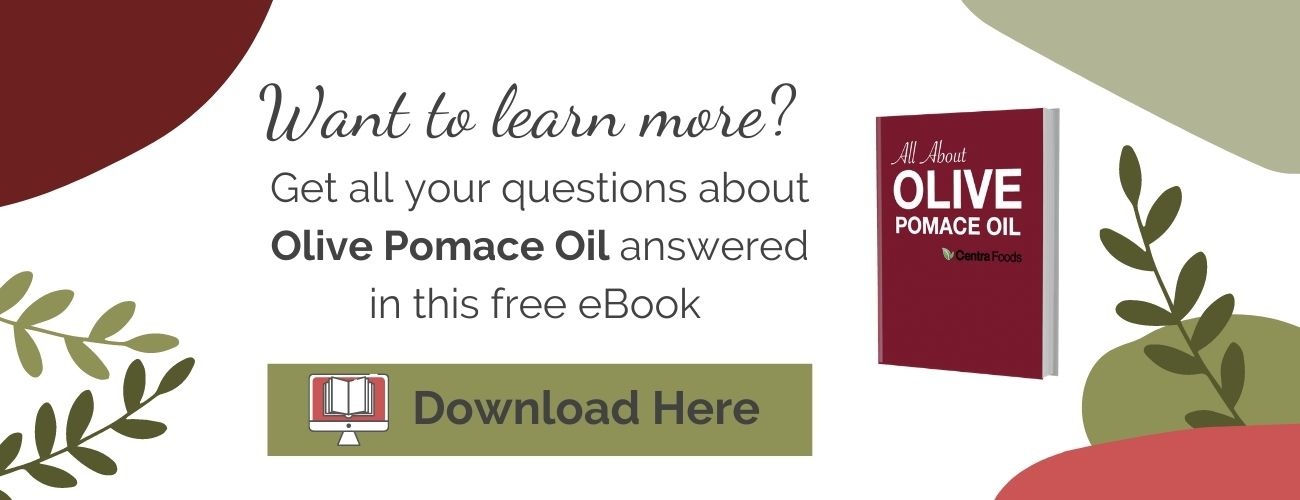Do you ever find yourself wondering how olive pomace oil is made? Did you know it is the lowest grade of olive oil?
Olive pomace oil isn’t made like the other grades of olive oil. Today, I’ll go through an overview of the step-by-step process, which will help you understand how it’s made, so you can decide if it is the right fit for you and your company.
Olive Pomace Oil Collecting
Pomace is the pulp that remains after the olive has been crushed into a paste-like substance, and the first spin of Extra Virgin and Virgin Olive Oil has been completed. The leftover solids that remain after spinning still have oil in them, sort of like clothes you have recently washed that are still wet after they have gone through the spin cycle.
Extraction
The solvent, typically hexane, is added to the pomace which causes the oil to be extracted from the pulp. Once that has taken place, the solvent will be removed leaving dry pulp and separate oil. The resulting oil is known as crude (or raw, or unrefined) olive pomace oil.
Is Olive Pomace Oil Refined?
The oil is indeed refined to create a mild color and flavor. The the refining process happens in multiple steps which are broken down for you below:
Step 1: Purification
This phase of refining purifies the oil to dispose of excess acidity, which allows the oil to be neutral in flavor. The oil also passes through latest-generation centrifuges which separate the oil from any left over sediment.
To help avoid cloudiness in the oil, it is allowed to settle, giving the sediment and particles in the oil time to gravitate to the bottom of a tank shaped like a cone for removal.
Step 2: Winterizing
The process of winterizing involves the removal of natural waxes found in the neutral oil. These natural waxes are what makes oil become cloudy, crystalize or freeze due to low temperatures. This is achieved by the oil cooling and being slowly mixed: the crystals formed during the slow mixing are separated by the traditional method (typically straining or sieving) and leave the remaining oil bright and clear.
Winterizing doesn’t always occur in the refining process, but refined oils much more commonly are winterized as well.
Step 3: Color Correcting
Olive pomace oil that is refined has a consistent color. This is due to a natural bleaching process that’s performed. Oil is warmed and either a type of clay (bleaching earth) or activated carbon is used to filter the oil. During the process, dark plant pigments are absorbed by the earthen clay and any remaining oil is characterized with a yellow-green hue.
Step 4: Deodorization
The final stage of the process involved injecting steam into the oil or bringing it to a high temperature. This step will create a light odor and flavor, leaving the finished product with little to no smell, as well as a slightly almond and bland taste.
Once all steps have been completed the oil is then stored in airtight opaque storage tanks, which are then are shipped around the world.
Topics: Olive Pomace Oil













